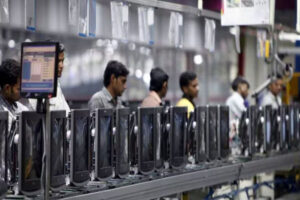A new research report from the Confederation of Indian Industry (CII) highlights the crucial steps that India must take to change its ecosystem in the Indian Electronics Manufacturing from “import-dependent assembly-led manufacturing” to “component-level value-added manufacturing.” The paper states that in 2022–2023, US$ 45.5 billion in components and subassemblies were needed to enable US$ 102 billion in electronics production and drive the Indian electronics industry.

By 2030, it is anticipated that this need would decrease to US$ 240 billion in order to sustain US$ 500 billion in electronics output.
By 2030, it is anticipated that the market for key components and sub-assemblies, such as PCBAs (Printed Circuit Board Assembly), would have grown at a strong CAGR of 30% to reach US$ 139 billion.
According to the CII report, the government should implement several important measures for Indian Electronics Manufacturing industry, which include SPECS 2.0 (Scheme for Promotion of Manufacturing of Electronic Components and Semiconductors), a plan to provide fiscal support, and import tariffs on components like camera modules, which are predicted to collectively account for 43% of the demand for components in 2022 and increase to US$ 51.6 billion by 2030.
These parts are either largely dependent on imports or have minimal manufacture in India. India rarely has the financial wherewithal to continue importing essential components said the CII report on the Indian Electronics Manufacturing Industry.
Five components are identified in the study as high priorities for India: PCBs, mechanicals, screens, camera modules, and lithium-ion batteries. By 2022, these components made up 43% of the demand; by 2030, they are predicted to reach US$51.6 billion. These components are now produced very little in India and are largely imported, a practice that India cannot continue alarmed the CII report.
Printed circuit board assemblies (PCBAs) are one of the key components and sub-assemblies that are expected to expand at a healthy 30% compound annual growth rate (CAGR) and reach US$ 139 billion by 2030.
In addition to rationalizing import tariffs on components like camera modules and introducing SPECS 2.0 (Scheme for Promotion of Manufacturing of Electronic Components and Semiconductors), the report calls on the government to sign Free Trade Agreements (FTAs) with European and African nations and implement a fiscal support scheme.
According to the analysis, policy assistance will result in a number of economic advantages, including an increase in GDP, a decrease in import reliance, and the creation of almost 280,000 employment by 2026. India will be known as a global center for electronics production because to these improvements, mentioned the CII report.




